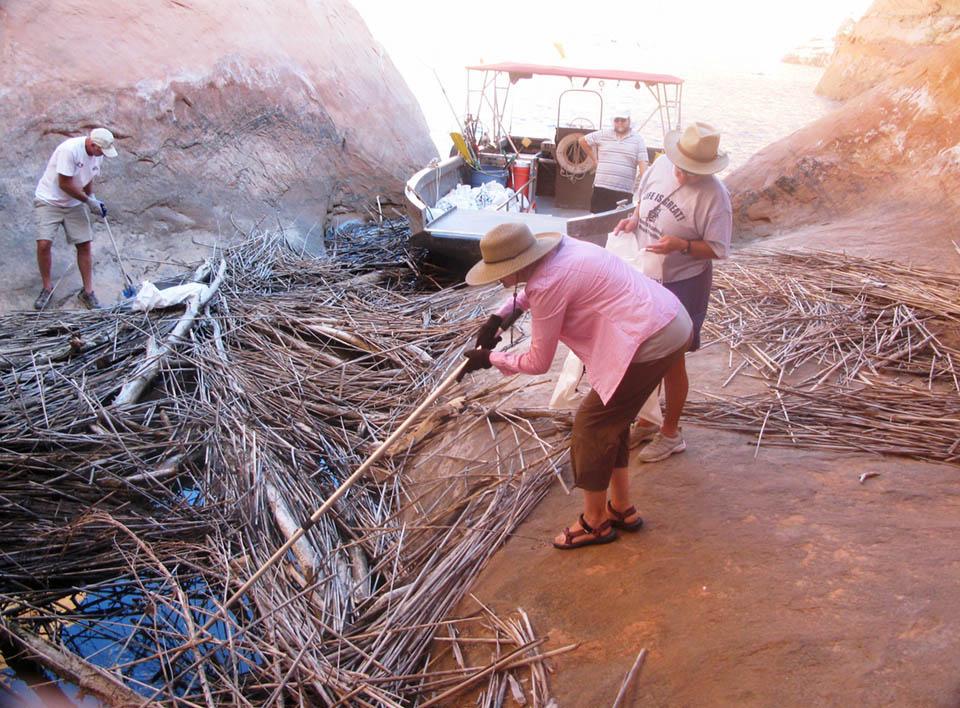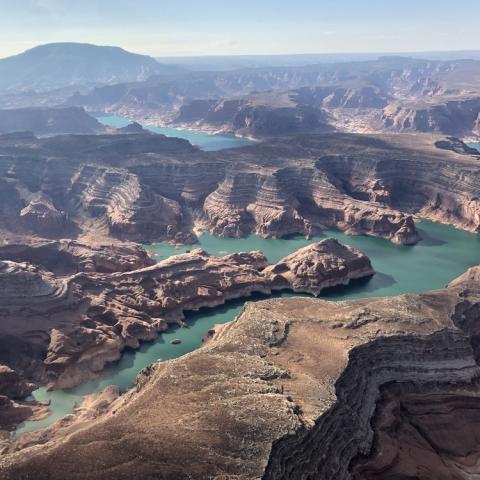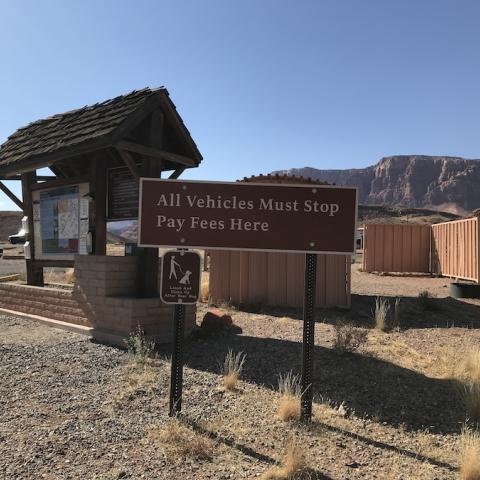
Spring Debris on Lake Powell /Trash Trackers
Winter's heavy snowfall in the Rocky Mountains of Colorado has led to rising water levels at Glen Canyon National Recreation Area, where boaters are being cautioned to pay attention to those levels.
Water levels on Lake Powell are now rising 6 to 15 inches in a 24-hour period, according to park staff. As a result, the main launch ramp at Bullfrog has sufficient water to cover the old coffer dam and is no longer, “at your own risk.”
The Antelope Point Marina launch ramp is expected to be open after Park Service staff install and adjust marine infrastructure to provide for boater safety and access. Visitors need to be aware of their property and keep it a safe distance from the rising shoreline. Vehicles should be parked 200 to 300 yards away from the water’s edge (depending on how long they are on the lake) so they will not become submerged and potentially towed. Depending on the grade of land, a foot of water rising vertically will cover approximately 30 to 50 feet of land horizontally.
Additionally, boaters need to be aware of rising water levels overnight that will cause float toys and other objects left too close to shore to float away. Houseboat users will have to check and possibly reset their anchors each day to pull slack lines tight.
Inflow is carrying debris and boaters should be aware of pieces of branches that could be as large as full trees floating in the lake. This debris could damage lower units when struck. Uplake, there have been large, dead cottonwood trees floating downstream from Trachyte Canyon, Ticaboo Canyon, and Good Hope Bay. These debris fields will continue downstream.
As always, watch your children around water and wear life jackets. Maintain safe travel in the main channel and go off plane in unknown water. “Do not drink and drive” applies to boating also, and always have a sober observer looking out for your party’s safety.
Water levels are significantly different than past seasons, so commonly known boating paths and saved GPS routes may not be safe with current lake levels. As boaters follow these and other safety measures, the park wishes all visitors a safe and enjoyable boating season.



 Support Essential Coverage of Essential Places
Support Essential Coverage of Essential Places






